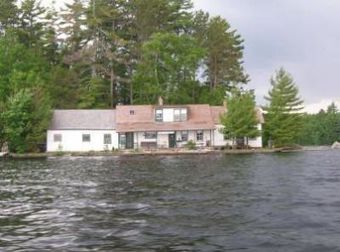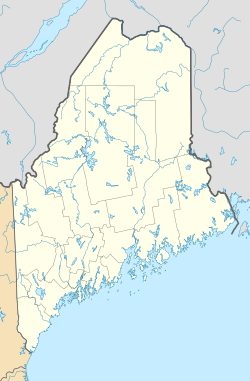Ambajejus Boom House facts for kids
Quick facts for kids |
|
|
Ambajejus Boom House
|
|
 |
|
| Nearest city | Millinocket, Maine |
|---|---|
| Area | 0 acres (0 ha) |
| Built | 1907 |
| NRHP reference No. | 73000145 |
| Added to NRHP | April 2, 1973 |
The Ambajejus Boom House is a very old building in the middle of Maine. It was built in 1907 on a small island in Ambajejus Lake. This building is special because it's the only one left from the time when huge amounts of logs were floated down rivers. These "log drives" were very important for Maine's economy. The Boom House was added to the National Register of Historic Places in 1973. Today, people can visit it by boat.
Contents
What is the Ambajejus Boom House?
The Ambajejus Boom House is a building made of wood. It sits on an island in the northwest part of Ambajejus Lake. This spot is just south of where the West Branch Penobscot River flows into the lake.
How Big is the Boom House?
The building is about 100 feet (30 meters) long. It is also about 15 feet (4.6 meters) wide. The Boom House is split into three parts. The middle part is the oldest. It has a pointed roof with an attic space. The other two parts were probably added soon after 1907.
A Long History of Logging
People have used this spot for a "boom house" since the 1830s. A boom house helps control logs floating on the water. The famous writer Henry David Thoreau might have even mentioned a building here in his travel writings.
Why Was the Boom House Important?
The Boom House was built in a very important place. It helped move logs from the forests down to the paper mills in Millinocket. The island where it sits, along with another island nearby, creates a narrow spot in the river.
How Log Booms Worked
Workers could stretch a special fence, called a containment boom, across this narrow part of the river. These booms would collect many logs together. Once collected, the logs would be pulled by boats down the chain of lakes. They would go to North Twin Dam. From there, they were released to float further downriver. Log drives like these happened on the West Branch Penobscot River until 1971.



